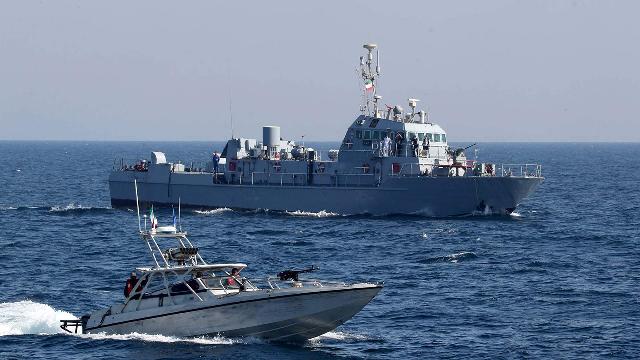And what role did the US forces play?
The conflict between Iran and Israel that took place in June 2025, with the inclusion of the United States of America at the last stage, will certainly go down in the history of wars as a war "in which everyone won." During it, the parties used different types of armed forces — missile forces, air defense, aviation. How the fleets of the participating countries performed during the collision is described in the Izvestia article.
Who supported Israel
The Israeli Navy has a fleet of submarines, corvettes and missile boats. At the same time, the Saar-6 corvettes have launchers of the Sea Iron Dome and Barak-8 anti-aircraft missile systems capable of fighting a wide range of aerial targets, including ballistic missiles. It is obvious that these corvettes participated in repelling the attacks, although the details are still unknown.
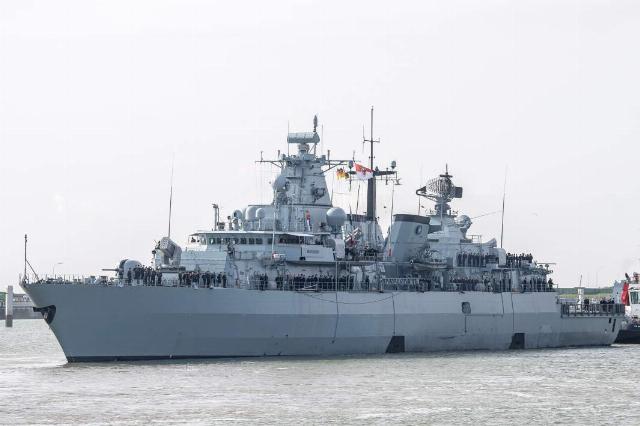
Frigate Brandenburg
Image source: Photo: Global Look Press/Sina Schuldt
The rest of the NATO ships stationed in the Mediterranean, for example, the frigates of Germany "Brandenburg" and France "Heprat", scattered to different corners during the conflict and tried not to show up on the radars.
Meanwhile, a group of NATO ships led by the British aircraft carrier Prince of Wales proceeded towards Singapore. In addition to the aircraft carrier, it also included the destroyer Dauntless and the frigate Richmond from England, the Canadian frigate Ville de Quebec, the Norwegian frigate Raoul Amundsen and the supply transport Mod, as well as the Spanish frigate Mendes Nunes.
Such a composition suggests that Britain is not able to provide decent protection to its aircraft carriers and solves problems at the expense of other NATO countries. On the other hand, it gives these countries proper maritime practices. The group is going to continue to the shores of China, although it is unclear how they are going to frighten the Chinese navy with so many vessels and two dozen F-35B aircraft.
Somewhat surprising are the reports that have appeared online that this group is to deploy to the Persian Gulf region, and at the same time, the second British aircraft carrier, the Queen Elizabeth, went to sea and went to help. The British had great difficulty sending one aircraft carrier to the seas, and they no longer had the strength for the second one. However, reports in the Russian media based on information from the Iranian news agency Mehr that the Iranians drove the British destroyer away from the Persian Gulf are unclear. There is nothing similar on the agency's website.
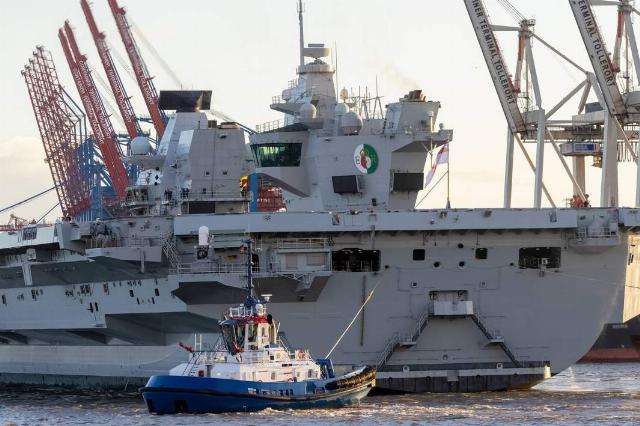
Aircraft carrier "Queen Elizabeth"
Image source: Photo: Global Look Press/IMAGO
The "British scientists" also distinguished themselves — a certain politician, David Karten, suggested that the United States could sink its aircraft carrier, the Chester Nimitz, and blame Iran for this, thus creating a pretext for war. Of course, this ship is at the end of its half-century career, and it will not have long to sail the seas. But it is a very valuable asset — both the ship itself and the aircraft on board. Plus, adding a pair of nuclear reactors to the world's oceans will cause serious protests from environmental protection organizations.
What the US Navy was doing
Meanwhile, the Americans assembled five Arleigh Burke-class destroyers in the Eastern Mediterranean. They are armed with the Aegis air defense system and can shoot down ballistic missiles with their Standard missiles. It is clear that they took an active part in repelling the Iranian missile attacks. In addition, two aircraft carrier strike groups were assembled in the Arabian Sea, led by the aircraft carriers Chester Nimitz and Carl Vinson, carrying almost a hundred FA-18 combat strike aircraft.
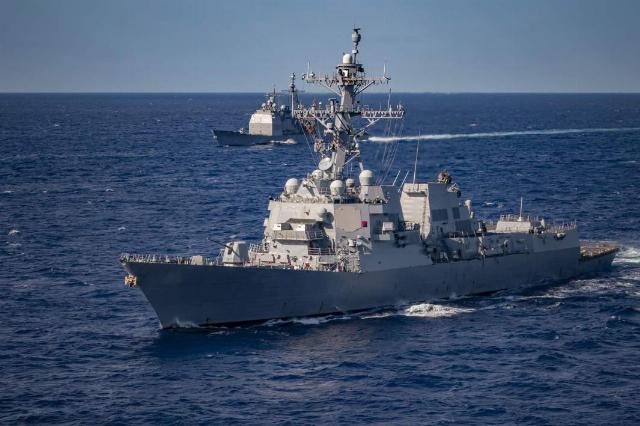
The aircraft carrier Carl Vinson
Image source: Photo: Global Look Press/Mc3 Robert Hicks/U.S Navy
The climax came on June 21, when a group of B-2 bombers took off from Whiteman Air Force Base in Missouri, heading west. The following scheme of the operation emerged. Planes cross the Pacific and Indian Oceans from the south to Iran and attack targets with their bombs. Carrier-based aircraft and Tomahawk cruise missiles from escort destroyers, meanwhile, would have made corridors in Iran's air defense system. And the bombers would have already passed through the corridors. In addition, carrier-based aircraft could themselves take part in the destruction of Iranian facilities. At the same time, the ships could provide assistance in the event of damage to the aircraft in the rescue of their crews. During the Second World War in the Pacific Ocean, submarines could receive orders of the kind — to drop everything and go rescue downed pilots. For example, the future President of the United States, George W. Bush, was saved.
However, it turned out that this was a distraction operation. Meanwhile, another group of B-2 bombers passed through the Atlantic Ocean and the Mediterranean Sea, flew over the territory of Israel and Iraq. And together with the American tactical aircraft deployed earlier in the region, it attacked Iran's nuclear facilities in Fordo, Netenza and Isfahan. The Georgia submarine also participated in the attack, firing 30 Tomahawk missiles. She became the fourth in a series of nuclear submarines with ballistic missiles on board the Ohio type. As a result of the strategic offensive arms reduction treaties, the United States was supposed to reduce its fleet of such submarines from 18 to 14. They felt sorry for sawing them, and they converted them into Tomahawk—type cruise missile carriers, and the boats on board can also deliver a marine special forces unit. The submarine can carry 154 such missiles.
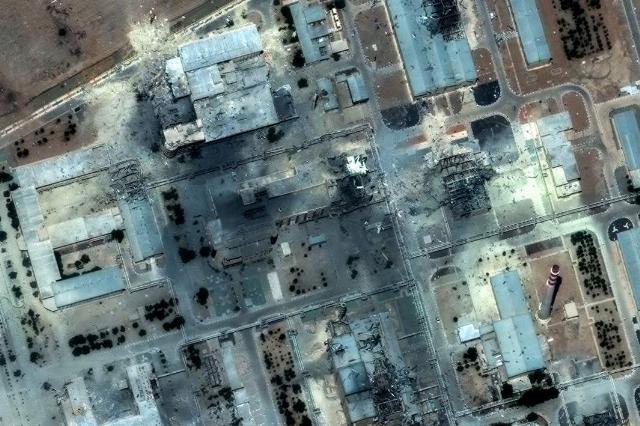
Photo: REUTERS/Maxar Technologies
Image Source: iz.ru
Georgia itself was built in the period 1979-1984 and renovated in 2005-2008. So the boat is far from new, but nevertheless, US President Donald Trump said: "By the way, if anyone thinks our military hardware was impressive this weekend, then in fact the strongest and best equipment we have is our nuclear submarines." "30 Tomahawk missiles have just been fired — all 30 accurately hit their targets. So, in addition to our great fighters and pilots, thank you to the captain and crew!" And added that American boats are 20 years ahead of everyone else. Which, most likely, Russian submariners will disagree with. But we do not know the entire plan of Operation Midnight Hammer, and there could be other schemes for using the US Navy in it.
And what about the Navy of the Army and the Islamic Revolutionary Guard Corps of Iran? In general, in the Iran-Israel confrontation, the warships of these countries were not important and priority targets for each other due to the inability to influence the enemy with these means. Nevertheless, Iran has an impressive number of submarines, combat boats and anti-ship missile systems. There is no doubt that, if desired, he could block the Strait of Hormuz. But why? Such an event would have strained relations with neighbors and countries that receive liquefied natural gas and oil from the Persian Gulf. And the USA or Europe are not among these countries.
Dmitry Boltenkov
